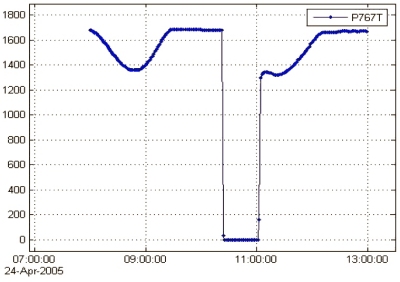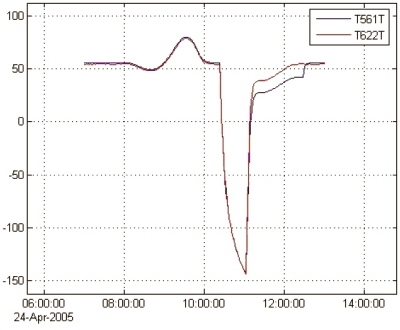No. 38 - SMART-1 experiences two Earth Eclipses
The spacecraft status is good with all functions working nominally. The main event during the period 11 to 24 April 2005 has been the ongoing eclipse season as mentioned in previous reports. As well as Lunar eclipses, which now last up to 40 minutes, the spacecraft also underwent two Earth eclipses.
This is the final biweekly SMART-1 status report. After hand over to the science teams, the spacecraft status will be updated monthly.
Future activities
- Continue Science activities
- Fine tune procedures and tools to optimise Lunar phase
- Preparation of Operational Orbit Review
Spacecraft Status
AOCS
The Moon eclipse season started on 7 April and will last until 20 June. The eclipses are currently occuring shortly after the perilune passage and lasting up to a maximum of 40 minutes. In addition two penumbral Earth eclipses occurred on 24 April 2005 with durations of 80 to 100 minutes.
Power
To date there have been 64 Lunar eclipses and on 24 April 2005 there were also two Earth eclipses.
Twice per year the Earth's shadow crosses the orbit of the Moon. This event was foreseen during the Lunar descent phase and a special phasing of SMART-1's orbit was used to minimise the impact on the power subsystem. The graph below shows the reduction in power through the solar panel as first the Earth, the Moon and then the Earth (for a second time) eclipse the spacecraft.
 |
|
On board measured SA power through Earth-Moon-Earth eclipse |
The reduced solar radiation during eclipse phase also led to a change in the temperature of the spacecraft.
 |
|
SA temperatures through the Earth-Moon-Earth eclipse |
Orbital Information
|
SMART-1 OD309 – Close to Apolune 504 | |
| Pericentre Distance (km) | 2283.738080 |
| Apocentre Distance (km) | 4523.111390 |
| Semi Major Axis (km) | 3403.424735 |
| Eccentricity | 0.328988 |
| Inclination (°) | 90.141407 |
| Ascending Node (°) | 236.892972 |
| Argument of Pericentre (°) | 270.830582 |
| True Anomaly (°) | 179.946359 |
| Osculating Orbital Period (h) | 4.949137 |
The changes since apolune 467 are as follows:
- Semi-major axis: -0.4 km
- Perilune height: -1.5 km
- Apolune height: +0.6 km
- Orbital period: -0.1 min
